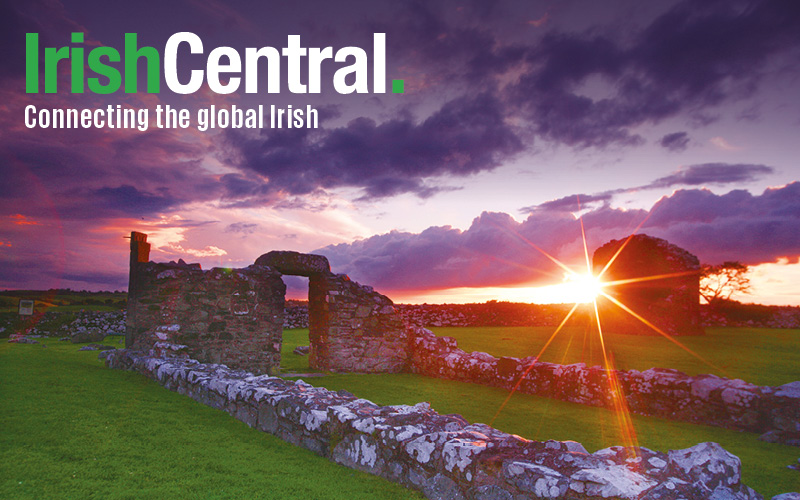The towering, concrete wall stretched across the city into the hazy, dewy fog that rested over Belfast that Monday morning. Covered in graffiti and dusted with weeds, if you looked close enough, these so-called “Peace Walls”- screaming anything but peace were dotted with tiny, half-moon crevices. Bullet holes.
Walking along the barrier, Joe Watson, our sixty-something tour guide with salt and pepper hair, led our young and unknowing group around either side of the fence to explain the inexplicable. A city divided, Belfast was engulfed by a 30-year conflict dubbed “The Troubles,” from the 1970s to 1990s. The battle formed two forces, the Loyalists (Ulster Volunteer Force), who chose to stay a part of the United Kingdom, mostly Protestant; and the Nationalists (Irish Republican Army), who strived for a free Irish Republic, mostly Catholic. Politics and religion intertwined, resulting in countless unnecessary deaths and molding a toxic hostility throughout the region.
While the peace agreement was signed and sealed almost 30 years ago, the cameras packed away, and the world turning toward a new battle somewhere else, Belfast seemingly never truly recovered from the wound. That’s not to say the city didn’t try. With dozens of tourist attractions— a shiny new Titanic museum, bustling botanic gardens, even commodifying their violent history into a tour, the city seemed no different from any other on the surface.
Yet, a tiny, fleeting feeling of tension seeped through the air. Perhaps somewhat subsided, but evidently not completely destroyed, the emotion leads me to believe the memories of such dark days continue to burn brightly in some natives’ hearts. Sensing the resentment and the hatred, I did not need to know “The Troubles” in its entirety to realize the conflict was far from over.
Continuing along the cracked and sandy sidewalk, eeriness crept over the vacant scene when the city suddenly didn’t look like a city at all— no pedestrians hurrying past, no restaurants tending to the lunch rush. The only company we had were the whispers of memories and loss that had occurred right beneath our feet.
Ambling along, Watson’s deep voice fills the silence as he explains that on each side of the dividing wall lie two winding roads, Falls and Shankill. Each resting in their chosen territory, these two roads experienced the most gruesome violence, a back-and-forth cat and mouse game that exploded Molotov cocktails, caught dozens of bodies, and captured the ghosts of the fallen. It seemed wrong to be walking all over such tragic grounds.
Even more striking along the roads are the vast, loud murals that cover every inch of spare canvas. Sides of buildings, billboards, even the wall itself contains dozens of faces. Smiling down on us, tourists below can’t force their eyes away from the young, innocent souls caught in the crossfire, or the old, experienced men who gave their life to the fight.
Read More: This is what Belfast looked like before "The Troubles" (PHOTOS)
Evidently, Belfast demands a memorial to the dark days, for at every turn there appears another face now gone, usually accompanied by the blood-red, swirly caption “Murdered by the UVF” or “Killed by the IRA.” Memorializing their dead, the murals even evoke a sense of martyrdom, making it easy to understand why such an unforgiving, angry air blankets the city— the darkest of moments from the fight are displayed as everyday, all day reminders.
Stepping on the North or South side of the wall means entering two different worlds. To the North side, Great Britain’s flag waves softly in the wind, determined British soldiers adorn pasty white walls, even the posh Queen Elizabeth’s fresh face welcomes you. Yet, take ten steps back, crossing through the wall to the South side, and within a blink of an eye, you see the tri-colored Irish flag sturdy while hanging above nearly every household door. The flag acts like a marker, notifying neighbors of your identity without speaking a word. The flag meant taking a side, either Loyalist or Republican, with no position in between. This potent propaganda filling the streets of Belfast reinforces and reminds passersby why the city remains divided.
Stubbornly, neither group makes an effort to bridge the gap to create a cohesive community once more. Content to live within the confines of their side, both North and South Belfast seem happy to have the safety net of the wall protecting their area. I felt a sense of helplessness, a longing to fix a city I barely knew. Like me, thousands of other visitors from around the world mulled over how to stop the division and the violence. Even Elton John wrote a song about peace in Belfast in his hit titled the same name of the city. Yet, as I came to realize, no song or speech could transform the tired land. If Belfast reconciled, it would unite because of the people there, who lived through the Troubles and despite the heartbreaking history, would forgive.
For now though, Belfast remains steadfast in its division, still reeling from the conflict that ripped a community apart, creating a new normal. Today, the world defines Belfast by its history, and as I walk down the grainy asphalt, I hope for the moment it is defined by its future.
---
Jessica Murphy is a senior at Villanova University receiving a B.A. in Communication. She worked for The Murmur newspaper while studying abroad in Copenhagen during the Fall 2014 semester and currently writes for her university paper, The Villanovan, covering Arts & Entertainment. Gearing up to move to New York City upon graduation, she plans to continue writing and feed her addiction to coffee.




Comments